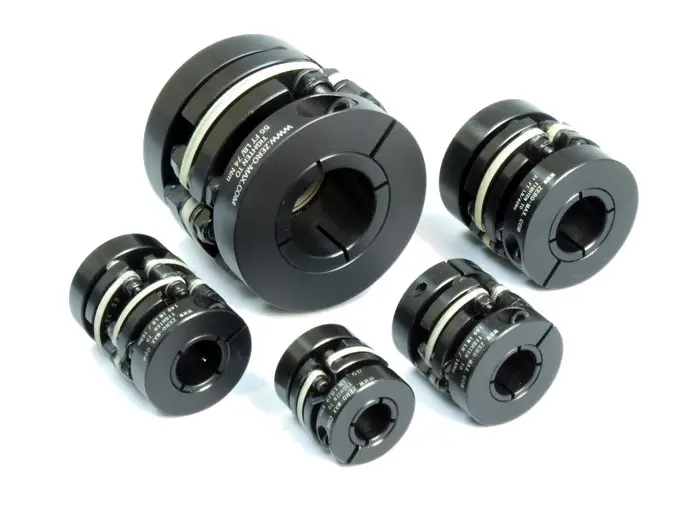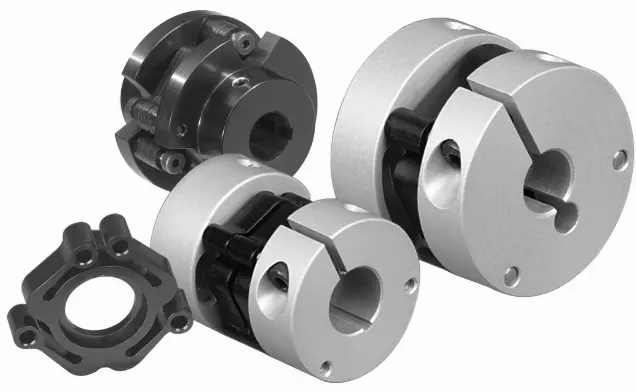Product Description
Customized Rubber Products & Parts Manufacturer
Rubber Bush Couplings used in AUTOMOBILES and industrial machineries as vibration isolators and for reduction of transmission of noise
Product Description
Description of goods
| Product Name |
Rubber Coupling |
|
Material |
CR+Aluminum |
| Process |
Vucanization |
|
Hardness |
53-57 Shore A |
|
Color |
Black |
| Size |
customized |
| Shape |
round. According to customer’s drawing or samples |
| Usage |
Industrial,Vehicle,Electronic,Air-condition |
| Features |
weather and water resistant, oil-resistant, dust resistant. |
|
Certificate |
ISO 9001,ISO14001,TS16949, ROHS,REACH SGS |
|
Lead Time |
15 work days after we receive your deposit |
| Payment Term | T/T ,L/C |
| Loading Port | HangZhou Port or as customer’s requirement |
Shipment
1. Express(fast,samples are suggested)
2. By air,(fatest,high expense)
3. By sea(large order,longer time,cheapest).
4. The standard shipping is 10-22 working days. The expedited shipping is 3-5 working days,.
5. All international orders may be subject to their custom fees or duty tax which we do not pay.
6. All buyers must pay for their own customs fees or brokerage fees or duty tax.
These fees vary due to price of item and government rate. Please contact your government website or shipping company to calculate fees.
Our Services
1.We will reply your enquiry in 24 hours,any time you can contact us.
2.OEM, buyer design, buyer label service is available.
3.We can provide free sample for your testing.
4.We have the certification of ISO 9001
5.Special discount and protection of sales area provided to our distributor.
6.Timely delivery
7.packing can make client brand.
8.Good after-sale service
Company Information
HangZhousun Rubber & Plastic Technology Co.,Ltd is 1 of the earliest professional manufacturer of rubber & plastic products factories. Our company specializes in producing and developing kinds of rubber and plastic products more than 10 years.
FAQ
Q: Are you trading company or manufacturer ?
A: We are factory.
Q: How long is your delivery time?
A: Generally 3-7 days for standard sealing products; and 15-20 days for big order and custom non-standard products.
Q: Do you provide free samples?
A: Yes, we offer free sample while customer need pay for the freight charge.
Q: Which Payment way is workable?
A: Irrevocable L/C, Cash, PayPal, Credit card and T/T money transfers.
B: 30% T/T deposit in advance, 70% balance before shipment after presentation of ready cargo.
C: L/C ( Irrevocable LC at sight: Order amount over USD10,000)
Q: What is your standard packing?
A: All the goods will be packed by carton box and loaded with pallets. Special packing method can be accepted when needed.
Q: How to select the raw compound for my application?
A: With years of experience working with a variety of material, we can help select the material that will best suit your needs while keeping material costs in mind.
Q: Do you use any international standards for the rubber products?
A: Yes, we mainly use ASTM D2000 standard to define the quality of the rubber materials, tolerances as per ISO3302, ISO2768, etc.
Q: Can you supply different color materials?
A: Yes, we can produce custom CHINAMFG and silicone rubber products in different colors, the color code will be required in case of an order.
Q: What materials are available to produce from your side?
A: NBR, EPDM, SILICONE, VITON(FKM), NEOPRENE(CR), NR, IIR, SBR, ACM, AEM, Fluorosilicone(FVMQ), FFKM, Liquid Silicone, Sponge, etc.

Is it Possible to Replace a Motor Coupling Without Professional Assistance?
Yes, it is possible to replace a motor coupling without professional assistance, but it requires some mechanical knowledge and proper tools. Here are the steps to replace a motor coupling:
1. Safety First:
Before attempting any maintenance or replacement, ensure the motor and driven equipment are turned off and disconnected from the power source to prevent accidents.
2. Identify the Coupling Type:
Determine the type of motor coupling currently installed in the system. Different coupling types may have slightly different installation methods.
3. Gather Necessary Tools:
Collect the necessary tools, such as wrenches, socket set, screwdrivers, and any other specific tools required for the particular coupling type.
4. Remove Fasteners:
Loosen and remove the fasteners that secure the coupling to the motor and driven equipment shafts. Keep track of the fasteners to ensure they are reinstalled correctly.
5. Disconnect the Coupling:
Disconnect the coupling from both the motor and driven equipment shafts. Depending on the coupling type, this may involve sliding the coupling off the shafts or unbolting it from the flanges.
6. Inspect the Coupling:
Inspect the old coupling for signs of wear, damage, or misalignment. This assessment will help determine if the coupling replacement is necessary.
7. Install the New Coupling:
Place the new coupling onto the motor and driven equipment shafts, ensuring it fits properly and aligns with any keyways or grooves.
8. Reattach Fasteners:
Tighten and secure the fasteners to hold the new coupling in place. Follow the manufacturer’s recommended torque values for the specific coupling model.
9. Perform Trial Run:
Before full operation, perform a trial run to check the coupling’s performance and ensure everything is working correctly. Monitor for any abnormal vibrations or noises.
10. Regular Maintenance:
After replacement, follow regular maintenance practices to inspect the coupling and the entire power transmission system for any signs of wear or issues.
While it is possible to replace a motor coupling without professional assistance, keep in mind that improper installation or failure to diagnose other underlying issues may lead to further problems. If you are unsure about the process or encounter difficulties during the replacement, it is always best to seek the help of a qualified technician or engineer to ensure a successful and safe coupling replacement.
“`
Real-World Examples of Motor Coupling Applications in Various Industrial Setups
Motor couplings are versatile components used in numerous industrial applications to connect motors to driven equipment. Here are some real-world examples of motor coupling applications in various industrial setups:
1. Conveyor Systems:
In material handling industries, motor couplings are commonly used in conveyor systems to transmit power from motors to conveyor belts. The couplings provide flexibility to accommodate misalignments and shock loads, ensuring smooth and efficient material transportation.
2. Pumping Stations:
Motor couplings play a crucial role in pumping stations, connecting motors to pumps used for water supply, wastewater management, and various fluid transfer applications. The couplings help maintain precise alignment between the motor and pump shafts, ensuring efficient pump operation.
3. Machine Tools:
In machining and manufacturing processes, motor couplings are used in machine tools such as lathes, mills, and CNC machines. The couplings enable accurate transmission of torque, allowing for precise movements and cuts in metalworking operations.
4. HVAC Systems:
In heating, ventilation, and air conditioning (HVAC) systems, motor couplings connect motors to fans and blowers. The couplings help absorb vibrations and shock loads, improving the overall efficiency and lifespan of the HVAC equipment.
5. Packaging Machinery:
In the packaging industry, motor couplings are used in various packaging machinery such as filling machines, labeling machines, and cartoners. The couplings provide reliable torque transmission and help ensure precise positioning of packaging components.
6. Printing Presses:
In the printing industry, motor couplings are utilized in printing presses to connect the motor to the plate cylinders and impression cylinders. The couplings enable smooth and accurate printing operations, minimizing image misalignment and ensuring consistent print quality.
7. Mining Equipment:
In the mining industry, motor couplings are employed in heavy-duty equipment such as crushers, conveyors, and draglines. The couplings handle high torque and shock loads, allowing for efficient material handling and extraction.
8. Marine Propulsion Systems:
In marine applications, motor couplings connect engines to propellers or thrusters. The couplings accommodate the movement of the ship’s hull and ensure reliable power transmission for propulsion.
9. Food Processing Equipment:
In the food processing industry, motor couplings are used in mixers, grinders, and extruders. The couplings provide smooth and sanitary power transmission, meeting strict hygiene standards.
10. Renewable Energy Systems:
In renewable energy applications such as wind turbines and solar trackers, motor couplings connect motors to the mechanical components responsible for adjusting the turbine or solar panel orientation, optimizing energy capture.
Motor couplings are fundamental components in these and many other industrial setups, contributing to the efficiency, reliability, and performance of diverse applications across various sectors.
“`
How to Diagnose and Fix Common Issues with Motor Couplings
Diagnosing and fixing common issues with motor couplings is essential to ensure optimal performance and prevent equipment failures. Here are steps to diagnose and address common coupling problems:
1. Visual Inspection:
Perform a visual inspection of the motor coupling regularly. Look for signs of wear, cracks, or any visible damage. Check for proper alignment and coupling installation.
2. Vibration Analysis:
Use vibration analysis to identify abnormal vibrations in the coupling or connected machinery. Excessive vibration can indicate misalignment, damaged coupling elements, or worn components.
3. Check for Misalignment:
Verify the alignment between the motor and driven equipment shafts. Misalignment can lead to coupling failure and increased stress on the machinery. Adjust the alignment if necessary.
4. Listen for Unusual Noises:
Listen for any unusual noises during motor operation, such as rattling or grinding sounds. Unusual noises may indicate a loose coupling or damaged components.
5. Inspect Coupling Fasteners:
Check the tightness of coupling fasteners, such as bolts or set screws. Loose fasteners can lead to misalignment and coupling slippage.
6. Lubrication:
If the coupling requires lubrication, ensure it is adequately lubricated. Lack of lubrication can cause increased friction and wear, leading to premature failure.
7. Replace Damaged Components:
If you find any signs of damage or wear during inspection, replace the damaged coupling elements promptly. This may include replacing elastomeric inserts, worn gear teeth, or other damaged parts.
8. Verify Torque Limiting (if applicable):
If the coupling has torque-limiting features, check that they are functioning correctly. These features protect the motor and equipment from overload situations.
9. Monitor Coupling Performance:
Regularly monitor the coupling’s performance to detect any changes or issues early on. Continuous monitoring can prevent more severe problems and reduce downtime.
10. Seek Professional Help:
If you are unsure about diagnosing or fixing a coupling issue, consider seeking assistance from a qualified technician or engineer.
By conducting regular inspections and addressing any problems promptly, you can extend the lifespan of the motor coupling and maintain the efficiency and reliability of the entire power transmission system.
“`

editor by CX 2023-11-27